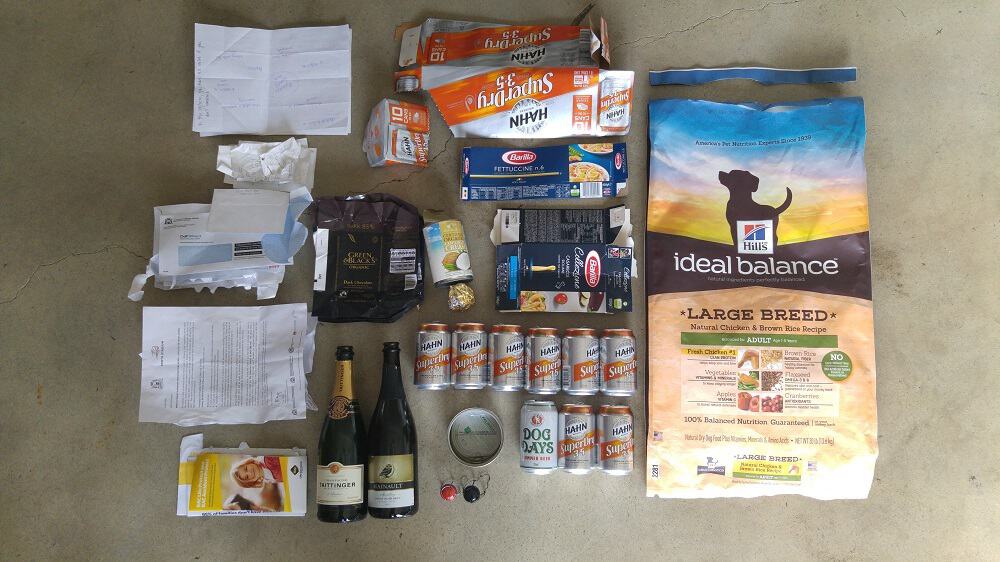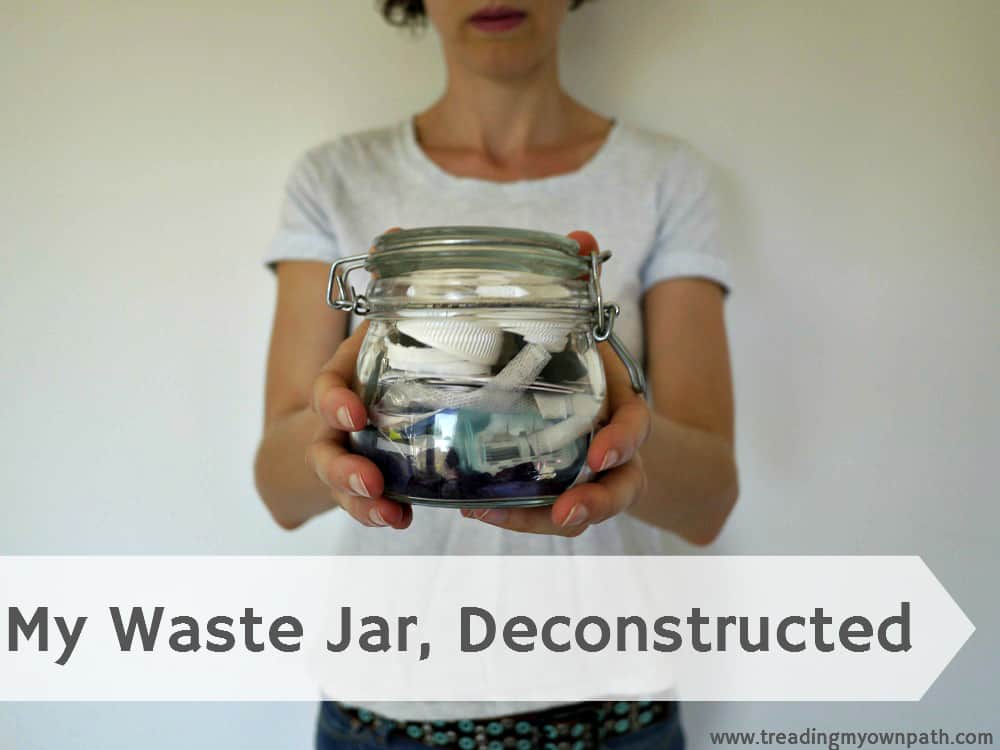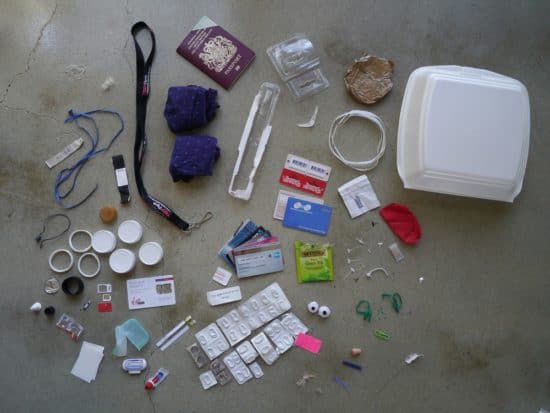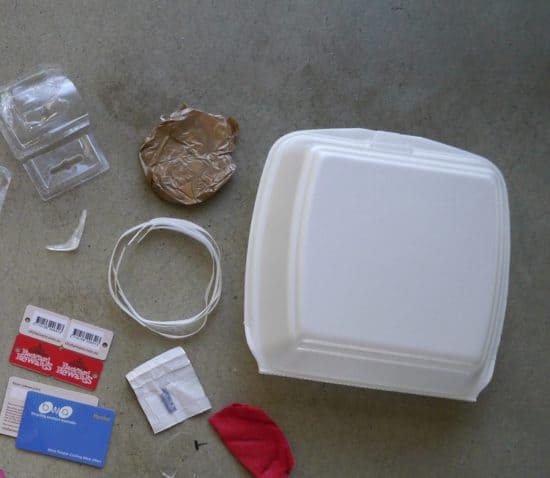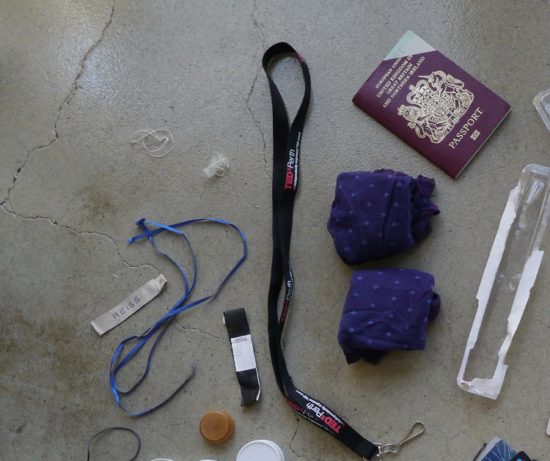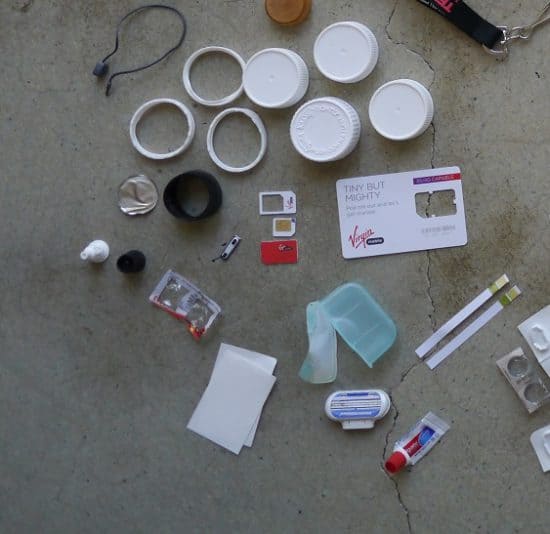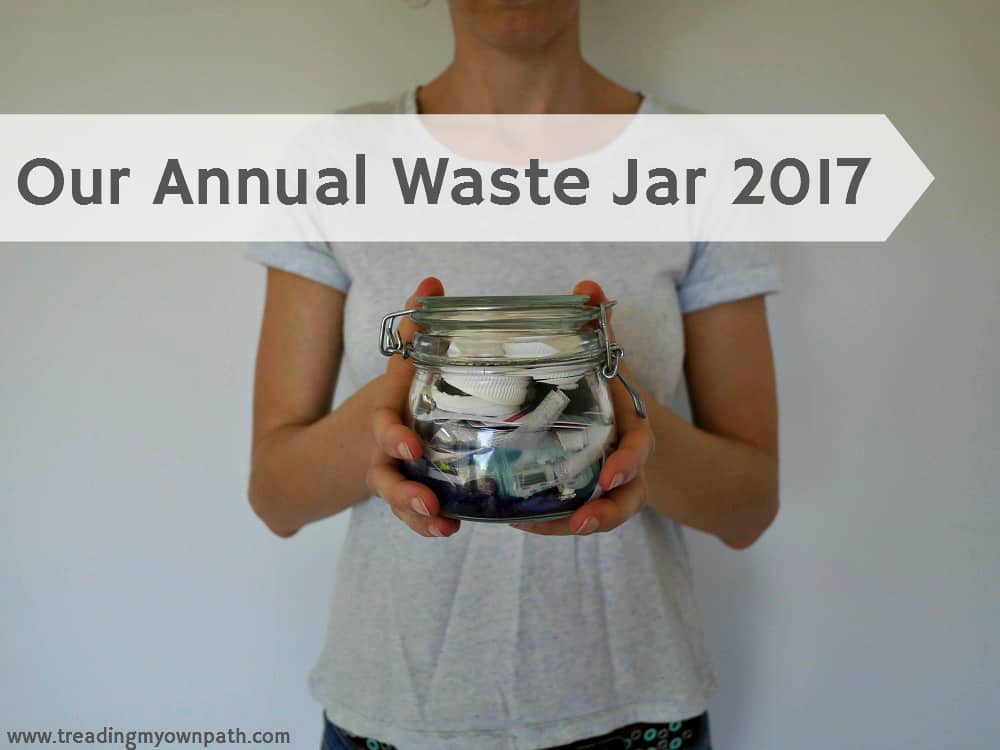How Much Does a Zero Waster Recycle?
The zero waste lifestyle is all about living in a way that creates as little waste as possible. It is often described as “sending nothing to landfill” and most people living the zero waste lifestyle will track their landfill waste. In fact, the jar full of waste has become rather iconic of the zero waste movement.
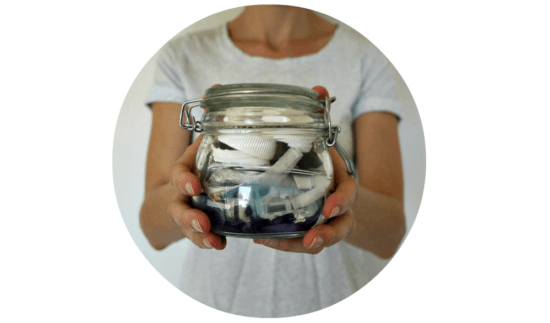
Last year I collected all my own landfill waste in a jar (I shared the contents of my annual trash jar here). I did it as I thought it would be an interesting experiment, and it was. I learned a lot.
However, I also think there are some downsides to focusing solely on personal landfill waste.
One of those downsides is that zero waste living is not just about reducing landfill. It is about reducing waste overall, and that means reducing our recycling too. The goal is to produce no landfill waste and no recycling either.
Yet that is much more challenging, and much less talked about.
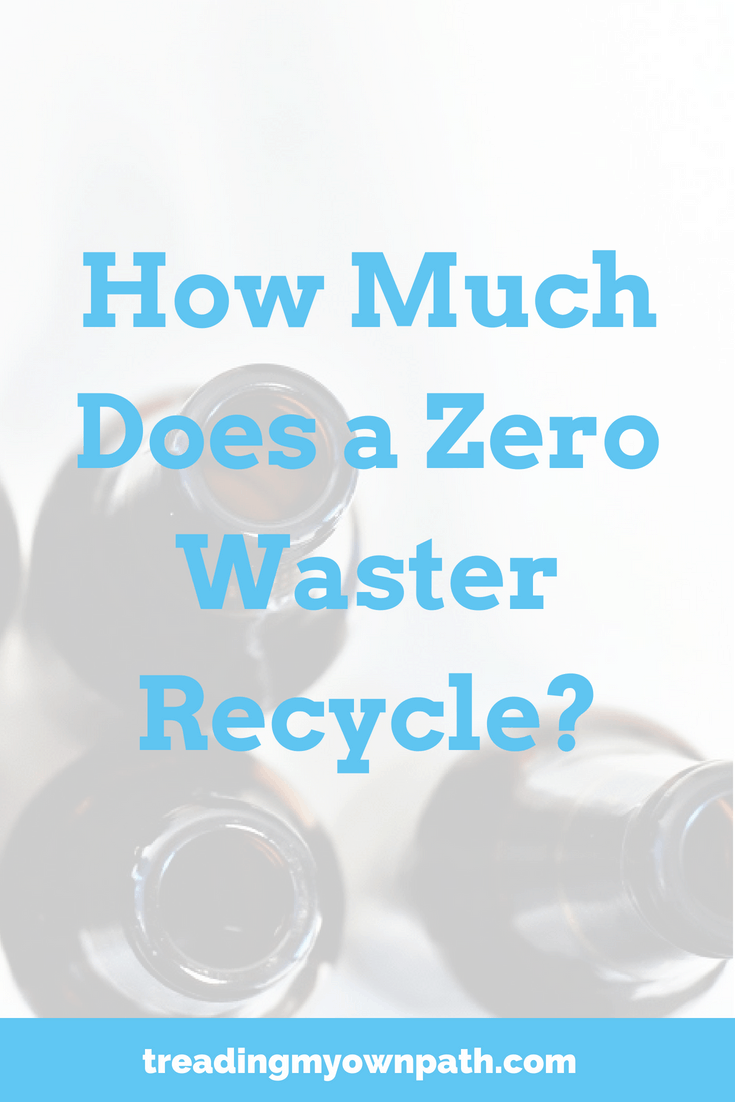
How much recycling zero wasters produce isn’t discussed as often as it should be. Personally, I think we should be talking about it more. This time last year I decided to record my recycling for an entire month, and share it (view April 2016’s recycling tally).
I’ve decided I’m going to make it an annual thing. There’s no particular reason why we chose April last year (I probably thought up the idea in March!). I’m choosing April again this year to keep things consistent.
There are no special rules for the month. We don’t do anything differently. That said, I’m sure it is in the back of my mind and I’m subconsciously more careful. Any waste that we (our household consists of two adults and one greyhound) create goes into our recycling bin as normal. After 30 days have passed, I tally it up.
Here’s our monthly recycling for the 30 days of April 2017:
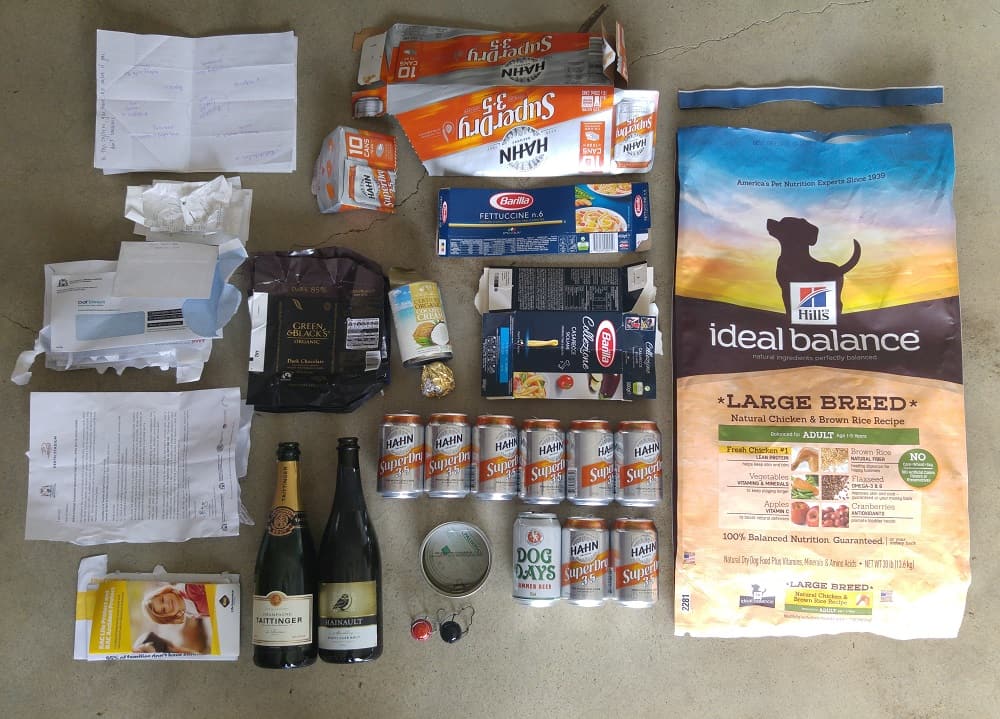
I did threaten my husband that I would divide the recycling up into separate piles of mine and his, because he creates more waste than me and I don’t want to be tarnished with the same brush! But really, we are one household, and I think most people can relate to one member of the household being more enthused than the others.
What’s in my (Zero Waste) Recycling Bin?
This is a summary of what’s in the bin, from right to left.
Plastic Bag of Dog Food: For the first four years of living zero waste we didn’t have a dog Now we do. He is also a dog with a sensitive stomach! We have tried a number of dog food brands. So far this is the one that works best. We get through one bag every 5-6 weeks. I would love to make my own dog food, and maybe one day I will. Right now it is still a little overwhelming. This bag can be recycled via REDcycle at our local supermarket.
Aluminium Beer Cans (and their Cardboard Packaging): My husband likes beer. A beer shop locally sells packaging-free beer on tap, but my husband prefers to visit the regular store on the way home from work. I don’t know enough about beer to go the bulk store for him! He chooses aluminium rather than glass as cans are recycled, whereas glass is crushed into road base in WA.
Pasta Boxes: My husband also loves pasta. We can get gluten-free pasta (buckwheat spirals and quinoa rice penne) from our local bulk store, and regular vermicelli nests from the small bulk section at our independent grocer. We eat these most of the time. Occasionally my husband will come across Barilla pasta in the cardboard box without the plastic window and will insist on buying it. He’s like some kind of collector! He probably buys one every 3 months or so. We just happened to have two boxes in this month’s recycling.
Tin of Coconut Cream: I made crumble recently as we had friends over for dinner. I didn’t have any cashews to make cashew cream, and there wasn’t enough time. My husband dashed to the shops for me and picked this up (at my request). Crumble just doesn’t work dry!
Ball of Tin Foil (and Corresponding Chocolate wrappers): Oh, I am so guilty of buying packaged chocolate. I have a weakness for Green & Blacks 85%. I have a serious weakness, in fact: in April I managed to eat my way through 8 bars (as demonstrated by the wrappers). We ate a fair amount of chocolate from the bulk store too.
Dolmades Tin: Sometimes I feel like my husband is a packaging fiend! (I realise the packaging he buys is minimal – it’s just a big part of our recycling.) He likes to buy tinned dolmades when we have people round for dinner. It makes me a little bit mad, because I love to cook from scratch and go to all this effort to make home-made food, and then he serves up pre-packaged food. He sees it as a treat!
Champagne Bottles and Metal Tops: Our friends brought a bottle of sparkling wine when they came for dinner. The other bottle has been in our fridge for 18 months (it was a moving gift) and needed using up. It was actually pretty flat. The corks have gone in the compost, and the foil is part of the foil ball.
Nonsense Promotional Material: We received a pamphlet from the RAC telling us most people don’t have enough insurance. What a waste of paper.
Unnecessary Letters in the Post: An enormous water pipe is being installed underneath our road to supply water to the new Perth stadium, and we are sent a weekly letter giving us updates. They’ve been camped out for almost 5 months now, but they are finishing up so we won’t be getting many more notices.
Envelopes: We still get the odd thing delivered by post. My husband recently had to renew his driving license (they need renewing every 3 years); some insurance documents that they couldn’t send via email; a new bank card as the old one had expired; and some other things.
Till Receipts: Wherever possible we refuse a receipt, but we still pick up a few every month. We recycle them. Some people don’t recycle thermal (BPA- coated) receipts, but I was advised that a few BPA receipts in a container load of paper doesn’t create a problem.
Paper from Workshops: I run sustainable living workshops, and use paper for some activities. Some people learn better by physically writing stuff down. As someone who’s partial to taking notes on the back of an envelope, I can relate. I don’t buy new paper, I use reject printing from workplaces, or mail I don’t need. Then I recycle it.
Recycling versus Composting
Some zero wasters choose to compost all their paper rather than recycling it. That makes the recycling pile much smaller, but in terms of energy, research shows that recycling paper is a better use of the resource than composting. Paper production is enormously energy intensive and recycling paper helps slow down new paper production.
Whilst I live in a city with good recycling infrastructure, I will always choose to recycle my paper over composting it.The only paper I compost is paper that cannot be recycled: anything stained by food or grease, tiny scraps, or shredded paper.
Whilst I’d love to see our recycling drop to zero, it’s heartening to know that we created less than this time less year. Some people say that “near-o waste” is a more accurate term than zero waste, and I’m inclined to agree. However, that doesn’t stop me aiming for zero.
Please tell me what you think! Do you find tracking your waste and recycling a helpful tool? Or is the extra fuss and effort too much hassle? Do you find seeing pictures of others’ waste inspiring, or do you find it demotivating? Is there something else you find more motivating? I’d love to hear what you think so please leave me a comment below!
[leadpages_leadbox leadbox_id=1429a0746639c5] [/leadpages_leadbox]

